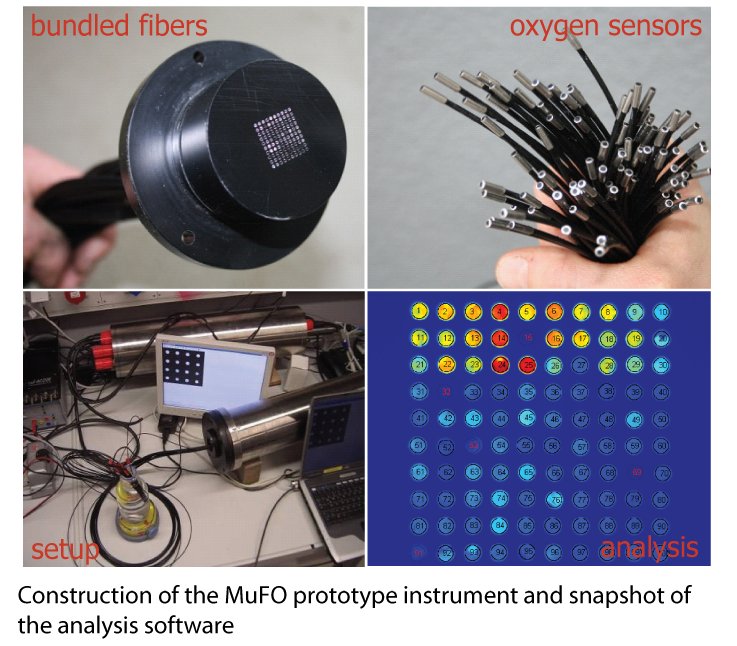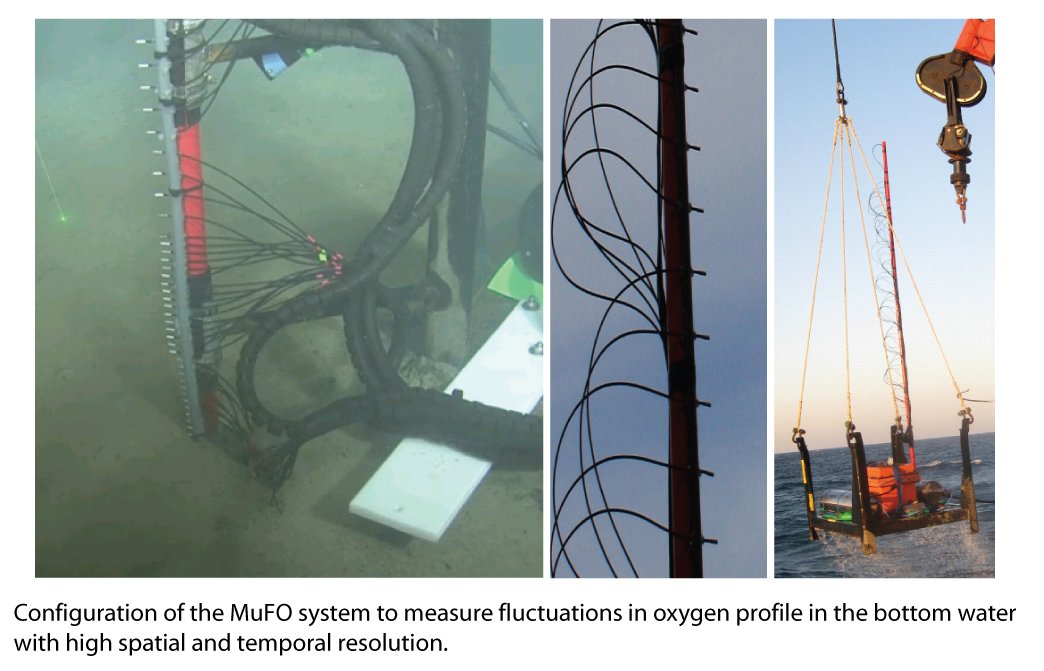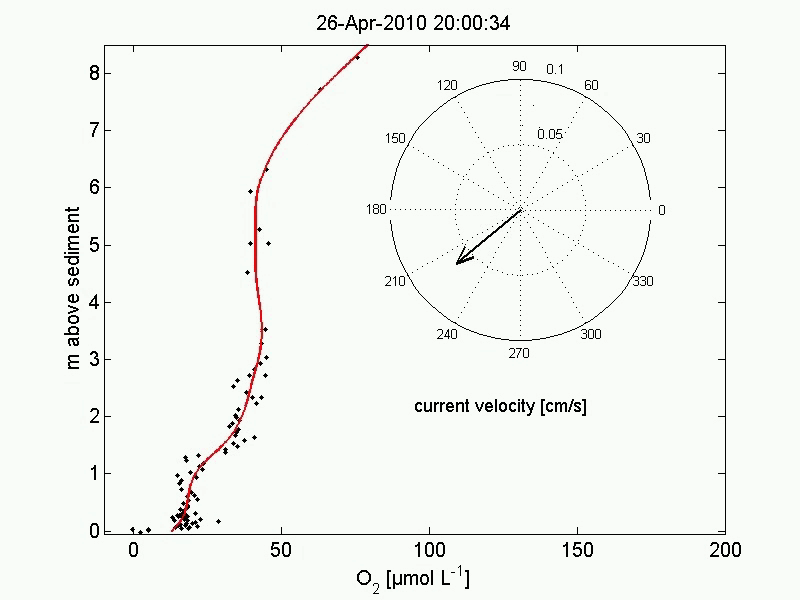Seitenpfad:
- Abteilungen
- HGF MPG Brückengruppe für Tiefsee-Ökologie und -Technologie
- Multi Fiber Optode (MuFO)
Multi Fiber Optode (MuFO)
Die Inhalte dieser Seite sind leider nicht auf Deutsch verfügbar.
Frank Wenzhöfer
Oxygen concentrations in the marine environment are highly variable on a wide span of temporal and spatial scales. Thus, for monitoring oxygen dynamics in the sea, continuous measurements at many different positions are often desirable. The MuFO was developed to enable multiple oxygen measurements in the watercolumn and in sediments with a high temporal resolution in combination with high degree of spatial flexibility.
The instrument:
The Multi Fiber Optode, which consists of 100 independent optical oxygen sensors, was developed at the Max Planck Institute for Marine Microbiology facilitating high precision oxygen measurements at 100 freely selectable positions.
The MuFO is manufactured from 100 fiber optical cables (Ø 2.2mm) with an oxygen sensitive sensor-head mounted at the end. The fluorescent optical sensors are operated by an LED-light source for excitation, a camera for readout, and a PC for instrument control and analysis, which are installed in watertight titanium housings for in situ operations. Oxygen measurements can be conducted with a temporal resolution of approximately 10 seconds. The fibers can be several meters long, allowing for measurements at distant spots as well as investigations of smaller scale structures and profiles. The system is battery-powered and has a maximum operational capacity of 15 hours for continuous measurements.
The principle:
The measuring principle of the MuFO is based on fluorescence quenching of a dye in the presence of oxygen. The fluorophore is immobilized on the end of each of the 100 optical fibers. The other ends of the fibers are bundled and placed in the focal plane of a sensitive and fast CCD camera. Excitation light is coupled into the fibers by strong LEDs and the fluorescent response from all 100 fibers is simultaneously recorded as digital images by the CCD camera.
Oxygen concentrations are calculated based on the life-time of the fluorescent response.
For data analysis, analytical software was developed recognizing each individual fiber in the digital images and calculating the concordant fluorescent life-time and oxygen concentrations for each individual sensor.
Future improvements:
We are currently working on expanding the system to also include other analytes such as pH, CO2, temperature, or pCO2. Furthermore, we plan to reduce size and power consumption of the instrument in order to improve maneuverability of the system as well as facilitate longer term monitoring applications.
The instrument:
The Multi Fiber Optode, which consists of 100 independent optical oxygen sensors, was developed at the Max Planck Institute for Marine Microbiology facilitating high precision oxygen measurements at 100 freely selectable positions.
The MuFO is manufactured from 100 fiber optical cables (Ø 2.2mm) with an oxygen sensitive sensor-head mounted at the end. The fluorescent optical sensors are operated by an LED-light source for excitation, a camera for readout, and a PC for instrument control and analysis, which are installed in watertight titanium housings for in situ operations. Oxygen measurements can be conducted with a temporal resolution of approximately 10 seconds. The fibers can be several meters long, allowing for measurements at distant spots as well as investigations of smaller scale structures and profiles. The system is battery-powered and has a maximum operational capacity of 15 hours for continuous measurements.
The principle:
The measuring principle of the MuFO is based on fluorescence quenching of a dye in the presence of oxygen. The fluorophore is immobilized on the end of each of the 100 optical fibers. The other ends of the fibers are bundled and placed in the focal plane of a sensitive and fast CCD camera. Excitation light is coupled into the fibers by strong LEDs and the fluorescent response from all 100 fibers is simultaneously recorded as digital images by the CCD camera.
Oxygen concentrations are calculated based on the life-time of the fluorescent response.
For data analysis, analytical software was developed recognizing each individual fiber in the digital images and calculating the concordant fluorescent life-time and oxygen concentrations for each individual sensor.
Future improvements:
We are currently working on expanding the system to also include other analytes such as pH, CO2, temperature, or pCO2. Furthermore, we plan to reduce size and power consumption of the instrument in order to improve maneuverability of the system as well as facilitate longer term monitoring applications.
Technical details
- 100 independent oxygen sensors
- Analytical range: 0 – 500µM oxygen
- Detection limit: 0.5 µM oxygen
- Resolution: 0.1 µM oxygen
- Accuracy: 5%
- Response time ~10s
- Power consumption: ~30W


